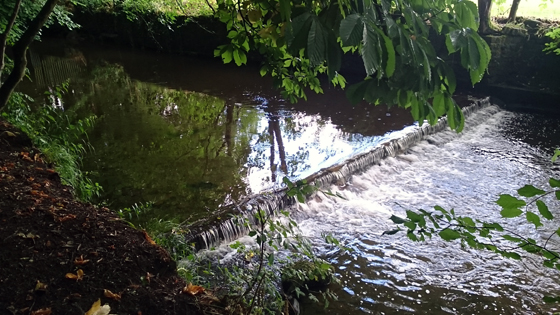Eastburn Beck is a tributary of the River Aire in Yorkshire. It is typical of a northern freestone stream / river that has had a chequered history with industrialisation, and as a consequence, it has lost some of its vitality to the constraints of walled banks and a host of weirs. The walls keep long sections straightened and have allowed housing to develop on what would have been a far more sinuous, meandering floodplain. The weirs interrupt the natural progression of pool-riffle sequences and have choked the supply of gravels downstream.
The result is a series of impounded shallow sections with uniform depth, flow, and substrate on the bed, and little in the way of cover within stream. While some of the overly wide, shallow sections with plenty of jutting stones creating small pockets of turbulence provide excellent habitat for juvenile trout (and is also favoured by the local pair of dippers), there is a distinct lack of spawning, fry and adult holding habitat.

